BY ELIZABETH DILTS, JERILYN FORSYTHE AND MELLANIE PEREZ
Our fourth annual rundown of our profession’s heaviest hitters has never been more fraught—because the industry has never faced anything quite like the pandemic. How have these top players achieved their current perches—and where are they, and dentistry itself, headed in the months and years ahead?
IT WAS ALL GOING SO SMOOTHLY. Even into late February, 2020 was looking like another in an ever-lengthier string of years in which the American economy exceeded expectations. Employment was, for all practical purposes, full. Anyone who wanted a job could have one. For dentists, happily, employed people are less likely to skip dental treatment, whether their semiannual checkup or more intricate care.
Then came March, and Covid-19. “If you want to hear God laugh,” runs the famous aphorism, “make a plan.” The carefully calibrated plans of billions of people around the world were upended sometime during the second week of March, by which time the novel coronavirus, SARS-CoV-2, had arrived in the United States and begun its remorseless rampage.
Months later, we still have no clear idea of how best to combat Covid-19, the disease caused by the virus. The economic damage has been severe, and a vaccine seems some way off yet. This is not merely a dental catastrophe, but a dental catastrophe it surely is. How can our profession—which cannot be performed under conditions of social distancing and which entails intimate contact between patient and practitioner for even the simplest procedures—possibly move forward?
The 32 people on the pages ahead—one for every adult tooth—have some ideas. And they’re well-placed to implement them. Not all of them are focused on Covid-19 to the exclusion of all else, of course, but the virus and its attendant maladies, physiological and economic alike, is at the fore of everyone’s mind. As every TV ad says, we will get through this, and dentistry will be restored and made whole. It might take a while. But the esteemed power players you’ll read about here, as varied as they are, will certainly be a part of the recovery.
Benco Dental, the publisher of Incisal Edge, maintains business relationships with several firms and organizations on this year’s list, including distribution agreements for products manufactured by 3M, Align Technology, Dentsply Sirona, Envista, Glidewell, Straumann, Convergent Dental and Young Innovations.
1. THE SUPPLIER
ERIC WENZEL
DIRECTOR, ORAL CARE GLOBAL BUSINESS, 3M | MINNEAPOLIS, MINNESOTA (NEW)
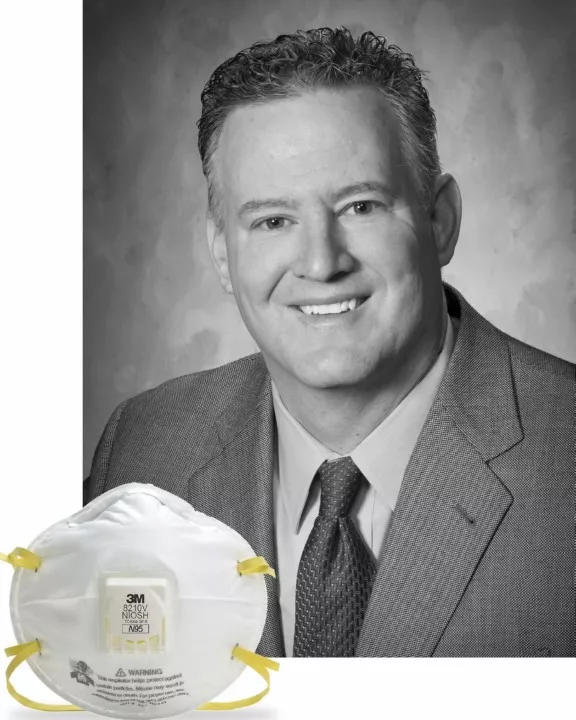 AS ONE OF THE biggest manufacturers of the suddenly famous N95 respirator masks, the giant conglomerate 3M has had its hands full since the earliest days of the Covid-19 outbreak. Hospitals need N95 masks, first responders need them, acute-care centers need them . . . and now the dental industry, which has never had specific use for N95s before, also needs them to reopen and operate safely. This reckoning, however, has been a long time coming.
AS ONE OF THE biggest manufacturers of the suddenly famous N95 respirator masks, the giant conglomerate 3M has had its hands full since the earliest days of the Covid-19 outbreak. Hospitals need N95 masks, first responders need them, acute-care centers need them . . . and now the dental industry, which has never had specific use for N95s before, also needs them to reopen and operate safely. This reckoning, however, has been a long time coming.
The N95 is among the highest-grade face protection available, made to keep out 95 percent—hence its name—of aerosol particles. This is vital for any health-care field, particularly these days, but it’s especially so for dentistry, in which 70 to 80 percent of procedures, even simple cleanings, generate such aerosols. The federal Department of Labor’s O*Net occupational database, in fact, names dentistry as one of the most dangerous jobs in America due to the prevalence of both aerosols and airborne pathogens—hazards that were a big concern before and are now absolutely titanic in the post- coronavirus dental practice. The Centers for Disease Control, among many others, has recommended that dental professionals wear N95 masks in order to practice, but demand—while not as great as in the first days of the pandemic—still significantly outstrips supply.
The good news is that as of the beginning of June, 3M began boosting its N95 production to around 50 million masks—officially known as “respirators”—per month, a 40 percent increase. Over 12 months, in essence, the immense company whose oral-health division Wenzel oversees will double its global output from 1.1 billion masks per year in normal times to more than 2 billion. Will dentists be able to procure their share? Wenzel says he’ll make sure they can.
3M has certainly been through a punishing stress test in 2020. In April, the company was placed under the auspices of the Defense Production Act (DPA) by the Trump administration, meaning it was henceforth required to prioritize orders from the Federal Emergency Management Agency (FEMA) over all others for its N95 output. (That also means FEMA will control national distribution.) Wenzel, who has been with 3M for more than a quarter-century, says he’s fiercely advocating for the oral-health industry as the company engages in occasional bureaucratic battle with its new executive-branch partners.
The challenge is demand versus supply, and it will continue to be. But it will get better every month.”
“First of all, we needed to get FEMA and the government to recognize this industry as critical care,” Wenzel tells Incisal Edge. “We’ve been lobbying with FEMA and working closely with the ADA and other distribution partners to get dentistry prioritized. We’ve had good success—dentistry is now No. 4 on FEMA’s critical-care priority list.” The agency is also sending masks directly to the American Dental Association for distribution by dental and orthodontic organizations to practices that are back in operation.
That critical-care designation is, well, critical: It has enabled 3M to import millions of its masks that are not manufactured in the U.S.—and therefore aren’t subject to DPA dictates—and allocate them to the ADA and others to help fill the vast needs of the dental industry. “The challenge continues to be demand versus supply, and it will continue to be for the foreseeable future,” Wenzel observes. “But it will get better every month.”
He continues: “3M is investing substantially to increase production to serve the market. . . . We know it’s more critical than ever to have the right protective equipment to keep our members, customers and the oral-care industry safe, whether it’s treating emergency patients or reopening offices.” Wenzel surely never expected to be thrust into the global limelight in quite this manner—but his and his company’s performance in the months ahead will go a long way toward determining just how well the return of dentistry will end up going. Stay tuned.
2. THE ADAPTER
JOSEPH HOGAN
DIRECTOR, PRESIDENT AND CEO, ALIGN TECHNOLOGY | SAN JOSE, CALIFORNIA (LAST YEAR: 1)
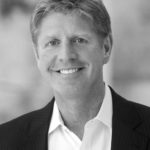 EARLIER THIS YEAR, things were looking just dandy for Align Technology: More than 8 million patients have used Invisalign, its signature teeth-straightening product, and revenue had steadily ticked up since 2017, with the company reporting $2.4 billion in total revenue last year.
EARLIER THIS YEAR, things were looking just dandy for Align Technology: More than 8 million patients have used Invisalign, its signature teeth-straightening product, and revenue had steadily ticked up since 2017, with the company reporting $2.4 billion in total revenue last year.
Today, though, like most businesses, Align has seen sales and revenue plummet amid the ruin of the coronavirus. It’s worth noting that Hogan, ever prescient, warned investors about the possibility of economic disruption from the virus as early as January, months before many American CEOs had publicly raised alarm. That’s because Align was in a good position to anticipate the damage.
Business from China constitutes roughly 8 percent of Align’s total revenue, according to the company’s fourth-quarter filings from 2019. After China first issued public warnings to avoid all nonessential medical and dental procedures, Align estimated that revenue from sales of Invisalign and its iTero scanner in China would fall by $30 million to $35 million in the first quarter alone, and for overall revenue to be in the range of $615 million to $630 million. It also estimated taking a $3 million to $4 million hit from its China-based factories that were forced to sit idle.
In the event, first-quarter results were bleaker: Revenue was $551 million, more than 15 percent lower than the fourth quarter of 2019. The culprit: lower sales of Invisalign products as consumers began to retrench. The second quarter will surely end up far worse.
It is therefore no mean feat—and cause for some optimism to boot—that Align in April closed on a deal to acquire the German CAD/CAM software company Exocad Global Holdings for about $419 million. Exocad makes software for dental labs and ortho practices through its 200 partners and resellers across 150 countries. The idea, Hogan said in a statement announcing the acquisition, is that Exocad would help pave the way for “cross-disciplinary dentistry” using Invisalign and iTero. It’s age-old financial advice that in a crisis you balance and diversify your portfolio, after all—and given that the market for clear aligners isn’t wholly dependent on dental practices being able to resume business as usual, the ever-influential Hogan is putting his company in good position to weather a few bumpy quarters and then resume its seemingly unstoppable climb.
3. THE CDC’S TOP COP
CASEY HANNAN
DIRECTOR, DIVISION OF ORAL HEALTH, CDC’S NATIONAL CENTER FOR CHRONIC DISEASE PREVENTION AND HEALTH PROMOTION | ATLANTA, GEORGIA (NEW)
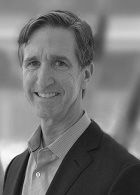 AS THE LEADING national public-health agency, the Centers for Disease Control and Prevention has been diligently, if sometimes haltingly, leading the federal Covid-19 response and issuing a variety of guidelines and edicts across countless health-care disciplines.
AS THE LEADING national public-health agency, the Centers for Disease Control and Prevention has been diligently, if sometimes haltingly, leading the federal Covid-19 response and issuing a variety of guidelines and edicts across countless health-care disciplines.
Hannan, director of the CDC’s Division of Oral Health, is the point man for the agency’s outreach to the dental industry—the key player helping determine dentistry’s governing regulations post-pandemic.
A 32-year veteran of the public-health workforce who has been with the CDC since 1996, Hannan has long been responsible for providing the overall direction of the government’s dental-health policy: guiding implementation, evaluating programs and, in recent weeks, developing strategies for getting dental offices reopened safely. “The CDC recognizes that dental-health personnel have very high-exposure-risk jobs,” he says. “We also recognize that dental settings have unique characteristics that warrant specific infection-control considerations.”
Do they ever. To date, the CDC’s primary recommendation has been to encourage dentists to prioritize urgent-care and emergency visits and to delay elective visits in order to protect dental practices’ staff. As the pandemic wore on, though, Hannan noted that dentists had increasing need to provide nonemergency care, prompting him to work on an interim framework for infection prevention and control.
That guidance has encompassed several key points: continuing to prioritize critical dental services while still providing some measure of care for nonemergency cases; communicating with staff and patients in order to screen for symptoms of Covid-19; and knowing steps to take should a patient with symptoms enter the practice.
Another crucial piece—one that dovetails directly with the work of 3M’s Eric Wenzel (No. 1)—is ensuring that dental staff has sufficient personal protective equipment, including N95 masks. The PPE supply shortage that earlier plagued the country is easing to some degree, but bottlenecks remain. Hannan’s guidance therefore also includes information about aerosol-generating procedures to avoid whenever possible, environmental infection control, sterilization and disinfecting. The latter will remain crucial even once the coronavirus is under control. “It’s unknown how Covid-19 may permanently change infection-control practices in dental settings,” Hannan says. We’ll all find out in real time—with the CDC’s top dental administrator making many of the most crucial decisions that will help us discover it.
4. THE INDUSTRY ICON
STANLEY BERGMAN
CHAIRMAN AND CEO, HENRY SCHEIN | MELVILLE, NEW YORK (LAST YEAR: 4)
“DON’T CALL US when it’s too late. . . . We want to participate in pandemic planning, and not in a crisis or epidemic.”
Strong, fateful, prescient words, uttered in a speech at the 2015 World Economic Forum in Davos, Switzerland, by Bergman, CEO of Henry Schein, the Fortune 500 company that has become under his 30-year watch the world’s largest health-care products-and-services provider for dentists and doctors.
Bergman, sharing the stage with former United Nations Secretary General Kofi Annan, was referring to an Ebola outbreak in West Africa, lauding Schein’s ability to organize and deliver medical goods in a crisis. After the CDC called him, he said, “a week or two later, $1 million in supplies—we raised the money—were on their way. . . . We know logistics. We’re good in the private sector at organizing.”
That expertise led Schein to be tapped by the U.S. government for “Project Airbridge,” a project to import badly needed supplies this spring as Covid-19 tightened its grip. But the effort fell apart due to infighting between government agencies, and the administration wound down the project toward the end of June.
As we’ve often noted, who will succeed the 70-year-old Bergman at Schein’s helm is a pressing question (see Jonathan Koch, Ones to Watch). All of dentistry will be keenly focused on Schein’s boardroom for clues.
5. THE LAWMAKERS
DENTIST IN THE HOUSE
BRIAN BABIN (R-TX), DREW FERGUSON (R-GA), PAUL GOSAR (R-WY), MIKE SIMPSON (R-ID), JEFF VAN DREW (R-NJ) WASHINGTON, D.C. (LAST YEAR: 14)
IN NORMAL TIMES, a U.S. Representative who switched parties would be one of Washington’s biggest stories. For Rep. Jeff Van Drew, though—who made headlines last December by becoming a Republican, complete with an Oval Office unveiling alongside the president—his move has been superseded by the Mueller investigation, a government shutdown, an impeachment trial, the Covid-19 pandemic and national unrest. “I think I’ve gotten at least 10 years squeezed into the last one and a half,” Rep. Van Drew says, a bit ruefully.
His switch to the GOP means all five dentists currently in the House—there are none in the Senate—are Republicans. Their votes on dentally oriented legislation have been a mix. All five voted no this February 28 on the Protecting American Lungs and Reversing the Youth Tobacco Epidemic Act of 2020. Also known as the Vaping Bill, the legislation (which passed the House and is pending in the Senate) would ban flavored and menthol e-cigarettes. Rep. Van Drew, who practiced dentistry for 30 years before getting into politics (he’s in his first term in the House but has served in various capacities in New Jersey for more than 20 years), defends his vote. “Am I saying cigarettes are better than vaping? No. I don’t think people should vape,” he says. “But I do think vaping can be a good way for people to get off cigarettes, and that should be up to the individual.”
More consequentially, in early 2019, Rep. Babin, along with Rep. Gosar, Rep. Van Drew and three others, introduced the Resident Education Deferred Interest Act. The legislation, which is stuck in committee purgatory, would amend the Higher Education Act of 1965 to allow medical- and dental-school students in residency to defer their loans interest-free during that period. Rep. Simpson has sponsored the Dental Loan Repayment Assistance Act, and Rep. Ferguson has been a cosponsor of a number of debt-relief bills, all of which favor the borrower. Nothing has yet become law. In Washington, even the gears of influence turn slowly.
6. THE STEADY HAND
DON CASEY
CEO, DENTSPLY SIRONA | COLUMBUS, OHIO (LAST YEAR: 6)
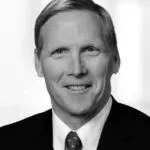 CASEY TOOK THE REINS of Dentsply Sirona in 2018, some two years after the merger of those two prominent companies. The tie-up was widely billed as a merger of equals at the time, but the combined effort was anything but smooth at the outset as the two struggled to establish clarity and division of labor under one roof.
CASEY TOOK THE REINS of Dentsply Sirona in 2018, some two years after the merger of those two prominent companies. The tie-up was widely billed as a merger of equals at the time, but the combined effort was anything but smooth at the outset as the two struggled to establish clarity and division of labor under one roof.
Casey, 59, who previously headed the medical division of Cardinal Health, seems now to have successfully navigated the initial integration difficulties, and the merged company’s stock price was increasing, as was revenue, up 4.9 percent year-over-year at the end of 2019. (After a virus-spurred plunge in late March, the company’s stock was on a steady upward climb as of early June.)
“Our results . . . clearly indicate that our restructuring plan is delivering,” Casey told reporters at the start of March. “In the fourth quarter and for the full year [2019], we delivered strong revenue growth, driven by robust increase in the technologies-and-equipment segment, and recent new product-launch activity.”
Among those product launches were the debut of the CEREC Primemill, a grinding-and-milling unit that aims to make chairside restorations faster and easier, and of Primescan, an intraoral scanner. The innovative new CEREC block, Tessera Advanced Lithium Disilicate, was also scheduled for a spring debut before the pandemic hit; it remains on track for a release at some point later this year.
Casey, who boasts more than 30 years’ experience in global health, has steadied the Dentsply Sirona ship after the troubled tenure of former CEO Jeffrey Slovin, who headed the company after the merger. As soon as the economy is able to reopen fully, Casey will no doubt keep the world’s largest manufacturer of dental products and equipment moving forward.
7. THE BARD OF THE BIG BOX
ROSHAN PARIKH
HEAD OF DENTISTRY, WALMART U.S. HEALTH & WELLNESS | ATLANTA, GEORGIA (NEW)
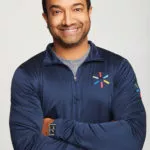 Dr. Parikh—we’ll be formal here, at least, at first, but everyone calls him Dr. Ro—only half-jokingly describes his role at Walmart as “helping to run a Fortune 1 startup.” By the time he joined the retail giant last year, the Chicago native had already grown a single practice into Chicagoland Smile Group, a network of multidisciplinary dental group practices with more than 20 locations and 75 dentists. Now he’s firmly on the ground floor, charged with integrating dentistry into Walmart’s ambitious multi-modality health canters, which include primary care, optometry, audiology, counseling and more under one roof.
Dr. Parikh—we’ll be formal here, at least, at first, but everyone calls him Dr. Ro—only half-jokingly describes his role at Walmart as “helping to run a Fortune 1 startup.” By the time he joined the retail giant last year, the Chicago native had already grown a single practice into Chicagoland Smile Group, a network of multidisciplinary dental group practices with more than 20 locations and 75 dentists. Now he’s firmly on the ground floor, charged with integrating dentistry into Walmart’s ambitious multi-modality health canters, which include primary care, optometry, audiology, counseling and more under one roof.
“To me, this isn’t just a job; it represents an opportunity with Walmart Health to help provide affordable, accessible health care, regardless of insurance coverage,” he says. This is indeed a crucial moment. The company is testing a handful of locations in Georgia, and the pressure is on Dr. Ro to make sure the dental component can operationally scale to 50 states and beyond—a big challenge, but one that could potentially make a meaningful impact, especially on those who lack access to care. “Most of America lives within 10 miles of a Walmart,” he adds, “and we have more than 150 million customers coming through our stores each week—so our ability to make a positive difference in people’s lives can be significant.”
Dr. Ro says Walmart aims not only to expand access, but also to address the unique challenges gig-economy workers in particular face that make getting care difficult. “Access can mean different things, whether that’s convenience through the nontraditional hours we’re open—like weekends and evenings—or upfront pricing to remove the guesswork [over whether] patients can afford to visit us next to someplace they’re already going: a Walmart store.”
He’s also an advocate for the increasingly prominent integrated-care approach that focuses on the whole patient. “A patient sees her primary-care physician thinking she might have a sinus infection. After a comprehensive examination, the primary-care physician walks down the hall to consult with the dentist, and the patient ends up being diagnosed with a maxillary molar toothache. That’s commonplace,” he says. “Here’s an example that isn’t: Another patient comes in for a maxillary premolar issue, upper left quadrant. Dental takes a 3D CBCT and sees nothing, refers him to a primary-care physician. After examining the sinuses, patient is asked when he last had an eye exam. Patient replies, ‘It has been years.’ They are then able to walk the patient down to optical and, as it turns out, he was having this referred pain because he actually needed bifocals. Being able to integrate quality care and save patients time and money is our goal.”
It’s not surprising that Dr. Ro is quick to geek out on the clinical side of things. “My passion comes from the fact that dentistry has given me so much. I want to give back to the next generation, and part of that means empowering dentists to practice at the top of their licenses in modern facilities like ours.” True to form, he then pivots flawlessly back to business. “At Walmart Health, we’re genuinely agile, so we can move quickly to meet the needs of patients and the community. We want to improve community health through Walmart Health and our stores as a center of well-being in the communities we serve; Walmart’s size and scale means Walmart Health has the resources to respond quickly as we continue to evolve our services and model to help people.”
Still only 39 years old, Dr. Ro—a member of Incisal Edge’s 40 Under 40 in 2017—has won a highly influential niche by thinking outside the (big) box. —Edward Kobesky
8. THE SEASONED PRO
HOWARD FARRAN
FOUNDER, DENTALTOWN.COM, DENTALTOWN MAGAZINE | PHOENIX, ARIZONA (LAST YEAR: 3)
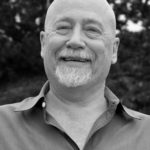 AS THE FOUNDER of the industry’s most popular online platform for all things dental, the irrepressible Dr. Farran has been a perennial on this list since its debut. Farran Media’s four “channels”—DentalTown, Orthotown, HygieneTown and TodaysDental—distribute toothsome content to more than a quarter-million subscribers through websites, mobile apps, a magazine (DentalTown, with which Incisal Edge has for several years had a distribution agreement), continuing-education videos, lectures and podcasts.
AS THE FOUNDER of the industry’s most popular online platform for all things dental, the irrepressible Dr. Farran has been a perennial on this list since its debut. Farran Media’s four “channels”—DentalTown, Orthotown, HygieneTown and TodaysDental—distribute toothsome content to more than a quarter-million subscribers through websites, mobile apps, a magazine (DentalTown, with which Incisal Edge has for several years had a distribution agreement), continuing-education videos, lectures and podcasts.
Busy guy. The slogan of DentalTown—Farran Media’s most popular channel—is “Where the Dental Community Lives.” Indeed, people have flocked to the website’s message boards in recent months to discuss how to cope with and protect staff and patients from the coronavirus. Site posts of late have included advice on how best, or whether, to reuse 3M’s essential-but-hard-to-find N95 masks (see Eric Wenzel, No. 1), suggestions regarding how readily dentists can bill patients for the personal protective equipment staff must use to treat them . . . and many, many questions about testing. (“Before we open, is it wise to get the staff tested for Covid or the antibody?”)
Farran’s broadcasting career has reached astonishing heights. He has recorded more than 1,300 episodes of his podcast, Dentistry Uncensored With Howard Farran. A recent episode found him pontificating about the challenges facing new dental-school graduates at a time when the pandemic has ravaged so much.
“They’re going to have better luck walking through the desert finding meteorites in the sand—it’s going to be tough,” he concluded glumly. (Farran himself was able to reopen his Arizona practice in early May after nearly two months.) His primary concern: that uncertain demand for dental care means dentists, for the time being, can’t justify any new hires.
Farran got his start in publishing, his lucrative side career, years ago after he submitted 10 articles to the Journal of the American Dental Association and it ran just four—“the four lamest ones,” he says. We’d say it all ended up OK: This August, Farran says, he’ll celebrate three decades of lecturing, and nearly as many being the lodestar for hosting the industry’s most pressing conversations.
9. THE POWER BROKERS
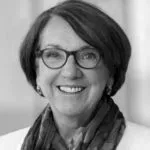 KATHLEEN O’LOUGHLIN
KATHLEEN O’LOUGHLIN
EXECUTIVE DIRECTOR, ADA | CHICAGO, ILLINOIS (LAST YEAR: 5)
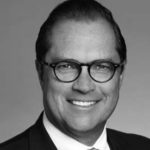 MICHAEL GRAHAM
MICHAEL GRAHAM
SENIOR VP, GOVERNMENT AND PUBLIC AFFAIRS, ADA | WASHINGTON, D.C. — (LAST YEAR: 5)
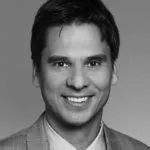 MARKO VUJICIC
MARKO VUJICIC
CHIEF ECONOMIST & VICE PRESIDENT, ADA HEALTH POLICY INSTITUTE | CHICAGO, ILLINOIS — (LAST YEAR: 29)
THE AMERICAN DENTAL Association has always been an important advocate and sounding board for dentists nationwide, but it took on an urgent new role this spring: as a trusted adviser helping its legions of members navigate the extraordinary uncertainty of the Covid-19 crisis’s early weeks.
The organization’s initial response was swift and comprehensive. Led by longtime president Dr. O’Loughlin and the efforts of über-lobbyist Graham on Capitol Hill, the ADA went to bat to ensure smaller dental businesses’ access to Paycheck Protection Program loans to help struggling practices retain their staffs. It also quickly created the ADA Coronavirus Center for Dentists, an online portal that served as a dentistry-specific clearinghouse for regularly updated information about current Covid-19 science and public policy.
The ADA’s Health Policy Institute, meanwhile, a data factory spearheaded by Vujicic, was quick to develop a system that tracked the impact of the virus to dental practices state by state. “We realized that our data and market analytics were in huge demand in the industry,” he says.
Pandemic or no, it’s still an election year, which means Graham’s D.C. muscles will surely be flexing. CEO Update’s Lobbyist of the Year for 2019, Graham was instrumental to the passage of the Reversing the Youth Tobacco Epidemic Act that same year. He also advocated for the Resident Education Deferred Interest Act, introduced in Congress by several dentist Representatives (see No. 4), which would enable dental and medical residents to defer federal loan interest during a residency; and the College Affordability Act, which would expand the Public Service Loan Forgiveness Program—a key issue given choking levels of dental-school debt.
Looking ahead, the ADA will tackle a lengthy list of hot-button issues: that old perennial health-care and insurance reform, tobacco use and vaping, the opioid crisis . . . and a certain vexatious public-health calamity that caused almost all of the country’s dental facilities to shut down this spring.
10. THE SELF-STARTER—TO A POINT
THE ENTREPRENEURIAL DENTIST
BUSINESS-MINDED, PANDEMIC-NERVOUS | EVERYTOWN, USA (LAST YEAR: 2)
THE AVERAGE RETIREMENT AGE among dentists right now is about 69 years old, which—back-of-envelope math forthcoming—means that some 38 percent of dentists could well retire in the next 15 years, according to figures from the ADA’s Health Policy Institute (see Marko Vujicic, No. 19).
More than half of current dentists are solo practitioners, but a greater percentage are older, indicating that the industry could be set up in the coming years for a seismic shift.
The dental service organization model (see the trio at No. 12) has been on the rise for a while now, but there’s another business category—that of the hybrid doc who gets some services provided by a corporate DSO but manages its business independently. DentalMarketIQ estimates that this group now numbers around 14,000, or nearly 7 percent of dentists nationwide.
“The highest-level trend is industry consolidation,” Jake Puhl, owner and CEO of the Portland, Oregon–based Dentist Entrepreneur Organization, told Incisal Edge in 2019. “It makes sense to take some of the bigger business aspects—billing, HR—and centralize them so you can just show up and do dentistry.”
Experience has shown that to be true—yet it’s highly unclear how an economic shock like the coronavirus might alter the entrepreneurial mindset. For six weeks from mid-March through the end of April, after all, the ADA advised dentists to suspend all nonessential treatment. That was a very big deal; DMIQ estimates that some 82 percent of dental procedures in 2019 were nonessential, with the majority of those done by specialists.
As such, general practitioners might well emerge from the virus mayhem in a better position than specialists, which could be good for hybrid practices in which the former work in relatively small groups with the latter. Any port in an economic storm, after all. (The ability to purchase nearby offices of older doctors who are antsy about practicing post-Covid presents a tremendous potential growth opportunity as well.)
There’s another, more aggressive entrepreneurial model as well, whose exemplar is Manhattan veneer specialist Dr. Michael Apa (see No. 13). There’s more than one way to run a business—and dentists will have to find their own optimal balance as the coronavirus threat finally recedes, and beyond.
11. THE DIVERSIFIER
KAREN WEST
PRESIDENT, AMERICAN DENTAL EDUCATION ASSOCIATION | WASHINGTON, D.C. (NEW)
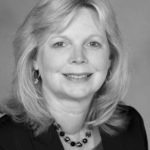 HOW INFLUENTIAL IS the current head of the ADEA, which bills itself “the voice of dental education”? Some clues: Founded in 1968, the group today serves more than 20,000 members and works on behalf of 78 dental schools across the U.S. and Canada to provide grants and scholarships; advocates for a variety of policies in Congress; and hosts an annual conference attended by more than 2,500 students and professionals. (This year’s, scheduled for March in National Harbor, Maryland, was canceled due to the pandemic.)
HOW INFLUENTIAL IS the current head of the ADEA, which bills itself “the voice of dental education”? Some clues: Founded in 1968, the group today serves more than 20,000 members and works on behalf of 78 dental schools across the U.S. and Canada to provide grants and scholarships; advocates for a variety of policies in Congress; and hosts an annual conference attended by more than 2,500 students and professionals. (This year’s, scheduled for March in National Harbor, Maryland, was canceled due to the pandemic.)
Dr. West, appointed the ADEA’s president in February 2019, is the former dean of the University of Nevada, Las Vegas, School of Dental Medicine and has long worked in dental academia and served a variety of professional organizations. One of her current priorities: pursuing a number of diversity initiatives to add some color to a profession that can seem as white as a freshly starched lab coat. Last October, she appointed the ADEA’s first chief diversity officer, Sonya Gyjuan Smith, and last fall she also hosted a gathering of the National Association of Diversity Officers in Higher Education Health Professions.
At a time when it’s more important than ever to expand the boundaries of dental care and consumer access to it, Dr. West says her efforts will continue once the immediate crisis of Covid-19 has passed: “Together, with our members, we’ll continue to adapt and stay ahead of the curve to move dental education forward.”
12. THE FOUNDING FATHERS
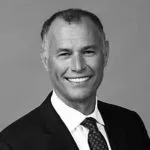 RICK WORKMAN
RICK WORKMAN
FOUNDER AND EXECUTIVE CHAIRMAN, HEARTLAND DENTAL EFFINGHAM, ILLINOIS — (LAST YEAR: 10)
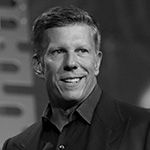 ROBERT FONTANA
ROBERT FONTANA
CEO, ASPEN DENTAL
EAST SYRACUSE, NEW YORK — (LAST YEAR: 10)
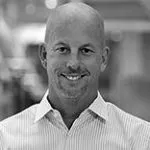 STEVE THORNE
STEVE THORNE
IRVINE, CALIFORNIA — (LAST YEAR: 10)
EACH OF THESE three masters of the DSO universe—all of whom have appeared on this list every year since its inception in 2017—founded his company in the 1990s. In the ensuing decades, each has put his stamp on the industry by transforming the once-sleepy landscape of the dental service organization into a wide-ranging (if sometimes difficult to differentiate) market for doctors who prefer to leave the running of the business side to others.
Their relatively long tenures, though, inevitably raise questions about succession: Three founder-run companies now into their fourth decade of operation naturally invite speculation. Of the trio, only Workman, 65—whose company is the biggest, with thousands of staffers supporting some 1,400 dentists across 37 states—has put a formal succession plan into place. (Thorne is 53, Fontana a sprightly 51.) In 2015, Workman named Patrick Bauer CEO of Heartland Dental while himself assuming the position of executive chairman, an arrangement that held even when private equity giant Kohlberg Kravis Roberts bought a majority stake in Heartland in 2018. He hasn’t given any firm indication when he might step down, though.
All three DSOs remain privately held—and while they might, like many others, put off major leadership upheavals in 2020 due to coronavirus-related disruption, C-suite intrigue will continue to entice dentally minded watchers as this trio of giants continue to maneuver through an industry they have so substantially helped to change.
13. THE PERFECTIONIST
MICHAEL APA
COSMETIC DENTIST, APA AESTHETIC | NEW YORK, NEW YORK; LOS ANGELES, CALIFORNIA; DUBAI, UNITED ARAB EMIRATES (NEW)
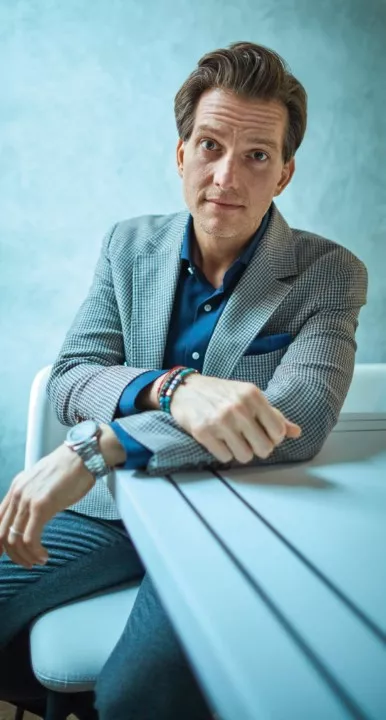 IT’S HARD TO REMEMBER A TIME before people could be famous for nothing at all. Pre–social media, you earned respect and became influential through hard work and accomplishments. It’s easy to Google No. 13, Dr. Michael Apa, and assume his success stemmed from the same kind of self-promotional savvy that turns ordinary Instagrammers into stars. But the truth is, it was a long, challenging road, and all the marketing in the world wouldn’t have meant anything were there nothing to back it up.
IT’S HARD TO REMEMBER A TIME before people could be famous for nothing at all. Pre–social media, you earned respect and became influential through hard work and accomplishments. It’s easy to Google No. 13, Dr. Michael Apa, and assume his success stemmed from the same kind of self-promotional savvy that turns ordinary Instagrammers into stars. But the truth is, it was a long, challenging road, and all the marketing in the world wouldn’t have meant anything were there nothing to back it up.
If you’re going to tell the story right, how Dr. Apa, 43, got here is almost more important than where he is. As early as age 5, he wanted to become a dentist, and through the mentoring of his own dentist he learned of Dr. Larry Rosenthal, a cosmetic specialist in New York who would help launch his career.
Once he got to dental school, though, he got a hard slap on the face when he realized he might not get a chance to work with Dr. Rosenthal (or someone like him) unless he switched schools, in this case to NYU—at a tuition nearly eight times what he was paying. “People tell you ‘You can’t, you can’t, you can’t,’ ” he says. His mentors made a compelling case for staying put. He went anyway: “You have to have the conviction to live your life.”
NYU didn’t have a cosmetic-dentistry program at the time, so Dr. Apa created one, of a sort, forming an aesthetics study club with the aim of inviting professionals to come and lecture. You probably know the rest of the story: He graduated, went to work for Dr. Rosenthal as planned, became a partner in 2005, Allure and Elle and Cosmopolitan came calling, then overnight, he came the closest a dentist has ever gotten to being a genuine celebrity.
Except that’s not how it happened at all.
DO IT MORE, DO IT BETTER
“I really wasn’t that good when I first started,” he says. “I just wanted to be. It wasn’t some natural talent. Dr. Rosenthal gave me more and more cases to do, because he wanted to start doing fewer. I’m good at what I do now because I do it more than anyone else, period.”
What he does is flawless, natural-looking veneers that run about $4,000 a tooth. Yes, there’s a Hollywood-luxe sensibility to it all that has helped attract more than half a million followers to his Instagram account. Yes, if you press him, he might name a few names and tell you he has treated members of 15 royal families. No, not a single one chose him solely because they think he’s internet-cool in a trendy but far-too-committed-to-perfection-in-dentistry kind of way.
If for some reason you doubt it, just look at his completed cases. Patients may like his style, but that style is informed by obsessive attention to detail to a point where you actually worry about how hard the guy must be on himself. Searching for authenticity on social media? Follow any of Dr. Apa’s accounts. If every suit is perfectly tailored, every wristwatch tastefully chosen, it’s because he knows patients expect a level of perfectionism in him beyond dentistry. Yet for every photo of him or his team, there’s probably five or six or more of actual cases. That’s where his head’s really at. Nobody said perfectionism is easy.
Take his ceramists, for example. He keeps an immigration lawyer on retainer because he recruits from around the world, and when he finds someone with great chops who can thrive in his practice’s culture, he does whatever is necessary. His labs are basically a business within a business, operating at an exceptionally high level to service one single client: Apa Aesthetic.
The Apa Beauty line of oral-care products—pout-pumping lip glosses, alcohol-free mouth-wash, sexy electric toothbrushes (really) and much more—are perennial recommendations on Vogue magazine’s holiday gift guides, and only high-end online retailers, such as Net-a-Porter, sell them.
“These things,” says Dr. Apa, speaking of the thousands upon thousands of small decisions that have gone into building his burgeoning empire, “are more intuitive.”
That’s because things have gone wrong for him as much as they’ve gone right. He’ll tell you the details off the record—not because he’s embarrassed, but more to protect the innocent. Being flexible enough to pivot often means turning your back on months or years of hard work if it isn’t leading to the right place. That stops most people in their tracks. Dr. Apa’s solution is to keep an endpoint in sight, and power through whatever obstacles emerge rather than religiously following the original plan.
His overnight success didn’t even start until 2014, when he bought out his mentor’s stake in the practice. As his reputation grew, he didn’t muscle his way into Dubai or Los Angeles on the heels of some kind of big-money marketing or PR push; he simply went where there was demand, and he had a pretty good feel for where he’d be best received.
Did he help stoke that demand? Absolutely. How else do you get a foot in the door? For example, when he wanted to try Dubai, he simply went right for it, reaching out to the international publisher for Hearst Magazines, who arranged a meeting with the editor in chief of Harper’s Bazaar Arabia. “I ended up doing her teeth,” Dr. Apa says. “She wrote a first-person story on it, and it exploded my career in Dubai.”
He is, however, acutely aware that his practice can get only so big without his making compromises, something he’s deadly allergic to. That’s why any expansion has been so careful, so deliberate, so painstakingly planned. Today, he has 86 carefully chosen employees who make the current scope manageable because they buy into the practice’s values 100 percent. “I expect excellence,” he says. “They know it. I don’t need to tell them anything. This wouldn’t work otherwise.”
WHAT LIES AHEAD
When Covid-19 rocked the world, Dr. Apa responded about how you’d expect. He created basically another company within a company for testing, starting with antibody tests. By late March, he was sending swabs to the lab and developing a complex protocol for mitigating risk so he could continue treating patients as restrictions eased.
“This has, no doubt, been a tough time with a substantial toll on life, and at times it can be hard to see a silver lining in it all,” he says. “What it has taught me is that, like anything, when you’re on a track for growth, there are times when the opportunity presents itself to self-analyze and reflect.
“We have been working so hard, especially these recent years, to grow as an international business, and this time has allowed me to evaluate and consider all that we have done and all that we want to do in the future to truly plan for the best direction forward, which is never a bad thing,” he adds, philosophically. “We will come out of this.”
Someday soon, he’ll get back to traveling 16-ish times a year to Dubai, about the same to Los Angeles and, of course, seeing patients at a pre-Covid pace at the primary office in New York. By his estimation, no one in the world does veneers as frequently as he does. It’s a good bet the slower pace is eating at him. “This team around me is so efficient, I can do five patients in a day.”
Still, despite what you may have seen or read, the Michael Apa you might think you know isn’t betting on media attention to carry him through his second act. “I’m not old, but I’m also not young anymore,” he says. “Doing the kind of dentistry I want to do, that patients want me to do, that’s what this has always been about.” —Edward Kobesky
14. THE INSTRUCTORS
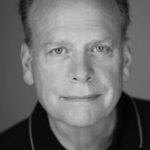 MICHAEL COHEN
MICHAEL COHEN
FOUNDER, SEATTLE STUDY CLUB | SEATTLE, WASHINGTON — (LAST YEAR: 18)
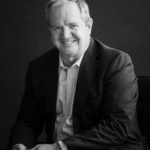 FRANK SPEAR
FRANK SPEAR
FOUNDER & DIRECTOR, SPEAR EDUCATION | PHOENIX, ARIZONA; SEATTLE, WASHINGTON (LAST YEAR: 26)
FORGET GRUNGE, FLANNEL and espresso—we’d argue that the keenest culture in Seattle in the early 1990s was in fact the dental educators and experts who were thick on the ground in the Emerald City at the time. Two of the top talents from that period are Drs. Cohen and Spear—who, much like Silicon Valley legends building technological wonders in their garages, got their start leading after-work study groups of similarly curious dental professionals.
Their educational enterprises have far outgrown those early confines, however. The more than 7,400 members of Dr. Cohen’s Seattle Study Clubs belong to some 260 organizations across the U.S., Canada, Western Europe, Australia, New Zealand, even Trinidad and Tobago. Each club hosts regular meetings that function as a forum where doctors can discuss and plan cases and listen to presentations by globally renowned clinical speakers.
Dr. Cohen’s operational genius stems from the fact that SSC provides tools to manage clubs, guides for group meetings and the “knowledge and support to join our existing university without walls,” as he puts it. SSC also recently launched its Business Academy, which teaches dentists—many of them entrepreneurs at heart (see No. 10)—how to build and run better businesses, with training and educational content they can stream online or attend in person.
Spear Education, which Spear founded in 1995, is an online university with a physical campus in Phoenix, where it hosts lectures, hands-on workshops and areas for live patient treatment. Dr. Spear is among a few dozen resident faculty on campus, which also hosts hundreds of visiting instructors every year.
It has had to tweak its curriculum in recent months, unsurprisingly: Spear closed its Phoenix campus from mid-March through May 31, which meant canceling several dozen educational events. It launched a large number of specialist-focused Covid-19 online resources, though, including virtual study clubs “to mitigate the short-term fallout from the public-health crisis,” Dr. Spear says, “and maintain referral networks so patients are cared for in the long run.” Smells like dental nirvana, you might say.
15. THE SPIN-OFF SPECIALIST
AMIR AGHDAEI
CEO, ENVISTA HOLDINGS | BREA, CALIFORNIA (LAST YEAR: 15)
IT HAS BEEN an eventful 12 months for Aghdaei. In mid-2019, he became chief executive of Envista, a separate, publicly traded company spun off from Danaher Corporation, whose dental business he had previously run. Envista went public last September and a few months later closed on its first acquisition, a biomaterials manufacturer called Matricel, which manufactures membranes for dental implants.
Envista is similar in many ways to the division Aghdaei managed at Danaher from 2015 to 2019. It’s a $2.8 billion (annual revenue) business with 30 dental brands and a strong position selling in emerging markets, all of which were bequeathed by Danaher itself. It presents new challenges, too: Aghdaei, 60, has recruited new staff and leadership, who will face innumerable (and unexpected) obstacles to 2020 goals set before the onset of the coronavirus. Nearly a quarter of 2019 sales for what is now Envista came from emerging markets—including China, where the company also recently received approval to begin manufacturing and selling Spark, its signature clear aligner.
In January, pre-virus, Aghdaei said Envista is expanding U.S. capacity for Spark and is aiming for a broader rollout later this year. “We have all the capacity we need for our 2020 commitment, and we continue to make investments in order to make sure that we can ramp up this business quickly as demand continues to extend,” he told industry analysts on an earnings call.
The company also launched an intraoral scanner last year, the KaVo Kerr X500, which is integrated with its other products, including Spark and, later in 2020 (in theory, anyway), its DTX workforce software. Its targeting of the U.S. consumer market was successful last year, with sales to the top 10 DSOs up 10 percent.
Investors have liked what they’ve seen. Several hedge funds and institutional investors, including Frontier Capital Management, Fieldpoint Private Securities, FinTrust Capital Advisors and Chevy Chase Trust Holdings, acquired new stakes or boosted their holdings of Envista stock in the first three months of 2020. Even amid the coronavirus market rout in late March and April, analyst consensus was to give Envista a “buy” rating. Yet the company has now scrapped its investor guidance for the year, and Aghdaei announced in April that he and everyone on Envista’s board would be taking a 15 percent compensation cut. Even the best-run dental businesses must contend, for the foreseeable future, with the economic damage the coronavirus has ushered forth.
16. THE TWO LEGENDS
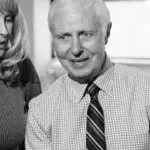 GORDON CHRISTENSEN
GORDON CHRISTENSEN
FOUNDER AND CEO, PRACTICAL CLINICAL COURSES | PROVO, UTAH — (LAST YEAR: 13)
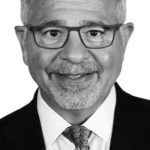 JOHN KOIS
JOHN KOIS
FOUNDER AND DIRECTOR, THE KOIS CENTER | SEATTLE, WASHINGTON — (LAST YEAR: 23)
YOU’D BE HARD-PRESSED to find any aspect of dental continuing education that hasn’t been influenced by the work of these two mas-ters: Dr. Kois the founder of the eponymous learning hub in Seattle, Dr. Christensen the cofounder (with his wife, Dr. Rella Christensen) of the Clinicians Report Foundation, a paragon of research, testing and continuing ed for dentists around the world.
The bread and butter of the Kois Center has long been its advanced graduate “didactic and clinical” program for dentists who are already in practice. It offers nine courses covering a vast range of topics: esthetics, restorative dentistry and much more. Although Dr. Kois, now 69, continues to taper the number of in-person lectures he gives each year, the multifaceted center that bears his name ensures that he’ll continue to enhance the careers and lives of dentists around the globe.
The influence of Drs. Christensen and Kois on the practice of dentistry and dental education is simply incalculable.
At 81, meanwhile, the tireless Dr. Christensen continues to practice prosthodontics at his Utah office and maintains that he has “no plans to retire.” CRF, which he and his wife founded in 1976, continues to do invaluable research and testing—Dental Consumer Reports, in essence—for the industry as a whole. Dr. Christensen alone has presented more than 45,000 hours of CE programs worldwide.
Both men have been regulars on this list; no doubt many of their students and mentees—and just those they’ve inspired in one way or another—have appeared here as well. Their influence is simply incalculable—and, fortunately for dentistry, ongoing as well.
17. THE SPATIAL PLANNER
DOUGLAS ERICKSON
CEO, FACILITY GUIDELINES INSTITUTE | ST. LOUIS, MISSOURI (NEW)
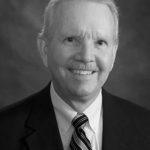 BEFORE THE PANDEMIC got going, the construction and design of dental facilities were relatively lightly regulated by state agencies. Whether they’ll resume benefiting from that gentle touch going forward given their obvious high-risk environments remains to be seen.
BEFORE THE PANDEMIC got going, the construction and design of dental facilities were relatively lightly regulated by state agencies. Whether they’ll resume benefiting from that gentle touch going forward given their obvious high-risk environments remains to be seen.
Whatever lies ahead, a principal player will be the Facility Guidelines Institute, a nonprofit organization out of St. Louis charged with determining guidance on health and residential-care facility planning, design and construction within the United States.
Founding member Douglas Erickson, who declined to be interviewed, has been FGI’s chief executive for five years and brings more than 40 years’ experience as a facility manager, consultant and advocate for the American Hospital Association, the American Society for Healthcare Engineering and more.
The group’s principal contribution is the regularly updated Guidelines for Design and Construction, with which Erickson has been involved since its first edition in 1985. In 2014, the Guidelines included a chapter on dental facilities, informed by the ADA, for the first time. The current spec for exam rooms, for example, calls for a minimum of 80 square feet of clear floor area, with two feet, eight inches clear at each side and leg of an exam table. It offers similar strictures for clinical service rooms, operating rooms and more.
Now that air quality and infection control are even more imperative than they were just months ago, though, the FGI will surely update its dental guidelines. It has already assembled an “Emergency Conditions” committee to help establish baseline planning standards for health facilities, first via a white paper with draft requirements and lessons learned from previous national emergencies.
The goal, according to the organization, is to have the paper peer-reviewed and available by the end of the summer, and later to be released within the 2022 edition of the Guidelines. Interested in learning more—and offering your two cents? At the moment members of the public can comment and submit proposals on the topic at FGI’s website, fgiguidelines.org.
18. THE PARTNER
MICHAEL CASTRO
CEO, DELTA DENTAL | OAK BROOK, ILLINOIS — (NEW)
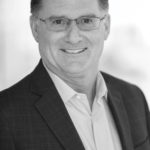 HAVING SPENT nearly two decades as Delta Dental of California’s chief financial officer, Castro was hotly tipped in late 2018 to take over as the parent organization’s CEO following the ousting of former chief executive Tony Barth that October. Castro stepped up as acting CEO for four months before assuming the role officially in February 2019.
HAVING SPENT nearly two decades as Delta Dental of California’s chief financial officer, Castro was hotly tipped in late 2018 to take over as the parent organization’s CEO following the ousting of former chief executive Tony Barth that October. Castro stepped up as acting CEO for four months before assuming the role officially in February 2019.
Delta is the largest dental-plan provider in the United States, offering insurance plans and services to more than 75 million Americans. Early in his tenure, Castro announced a partnership with Moda Health, an insurance provider to Alaska and Oregon since the mid-1950s, to combine expertise and broaden both companies’ ability to deliver benefits, services, technology and support to greater numbers of customers. In May 2019, Delta also linked up with health-tech company Philips to improve patients’ oral-health outcomes through technology such as smart toothbrushes.
Most recently, this past September, Castro announced a partnership with Newton, Massachusetts–based Virtudent (see Hitesh Tolani, Honorable Mention) to make it easier for Delta customers to access dental care via on-prem-ises mobile clinics within their workplaces. One thing to keep an eye on: This March, Delta Dental of California reached an agreement with the California Dental Association regarding a reduced fee structure for some 2,200 specialists in its Premier network across the Golden State—reductions sup-posed to take effect this July but pushed to January 1, 2021, in the wake of the Covid-19 crisis. This followed similar action in Washington state; last November, the ADA filed a class-action antitrust suit against Delta Dental and several others to combat the reductions.
19. THE TRAILHEAD GUIDE
MICHELLE LEE
EXECUTIVE DIRECTOR, ORGANIZATION FOR SAFETY ASEPSIS AND PREVENTION | ATLANTA, GEORGIA — (NEW)
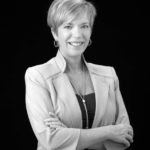 IN THE EARLY 1990s, the Organization for Safety Asepsis and Prevention (OSAP) achieved substantial renown for having shepherded the dental industry through the worst uncertainty of the HIV/AIDS crisis, which can now be thought of as a trial run of sorts: As the Covid-19 pandemic lingers, the organization finds itself at a new crossroads.
IN THE EARLY 1990s, the Organization for Safety Asepsis and Prevention (OSAP) achieved substantial renown for having shepherded the dental industry through the worst uncertainty of the HIV/AIDS crisis, which can now be thought of as a trial run of sorts: As the Covid-19 pandemic lingers, the organization finds itself at a new crossroads.
Founded in 1984 as a consortium of clinicians, educators, consultants and researchers, OSAP remains the only national dental association solely focused on infection control. Suffice it to say it has never faced a period quite like the last few months under the guidance of Lee, its executive director since 2018.
Lee brought more than 30 years of dental and health-care leadership experience when she arrived, making it her first call of duty to reach out to national and state dental organizations to provide them with assorted content, lecturers and educational material. This year, “as [the pandemic] began to progress, we knew dental professionals needed to hear from the experts,” Lee says. “We could have easily set up webinars and presented them to our membership, but we knew that we needed to reach many more.”
As the pandemic began to progress, we knew dental professionals needed to hear from the experts.”
Fielding questions from corporations, manufacturers and distributors throughout dentistry prompted OSAP to set up a dedicated Covid-19 tool kit on its website, which includes an exhaustive list of resources both private and governmental, as well as safety guidelines: preparing a dental office for reopening, infection-control parameters, mask and face-shield specifics and much more.
OSAP has also helped a number of dental associations by reviewing and editing their own best practices and canvassing a variety of pros for responses to commonly asked questions. “My ongoing role is to help OSAP achieve its vision that every dental visit is a safe dental visit, and to continue to position [the organization] as the leader in dental infection-control education,” Lee says. Her group’s longstanding relationship with the CDC’s Oral Health Division (see Casey Hannan, No. 4) has helped amplify its megaphone—which is delivering messages dentists everywhere will be hearing, and heeding, in the tumultuous months ahead.
20. THE INVESTOR
RICHARD SCHNALL
MANAGING PARTNER, CLAYTON DUBILIER & RICE HEALTHCARE PRACTICE | NEW YORK, NEW YORK (NEW)
FOR NEARLY 25 YEARS, Schnall has been a partner at private equity stalwart Clayton, Dubilier & Rice, where two of his most important portfolio companies are also two of the biggest names in dentistry: Carestream Dental and SmileDirectClub.
Schnall’s pedigree is solid: He has an MBA from Harvard and investment-banking experience that took him to industry giants Smith Barney and Donaldson, Lufkin & Jenrette; he became CDR’s co-president in January and thus took the reins as dentistry’s most prominent M&A investor. He’s been a dental dervish the last few years, in fact, having acquired Carestream’s digital business in 2017 and, a year later, leading CDR’s investment in SmileDirect, an infusion of $380 million that valued the company at $3.2 billion.
Schnall, who took a SmileDirectClub board seat, touted the company as one of a number of “fast-growing, disruptive health-care businesses that lower the cost of delivery while optimizing patient outcomes,” and CDR was surely pleased—at first—with SmileDirect’s highly successful public listing last September.
It’s been rough sledding lately, though, with the company under pressure over the quality of its treatment, near-universal opposition from dentists and its stock going down concurrently as a result. All that was before Covid-19, too. What does M&A say about dental companies in what are now certain to be turbulent months ahead? Schnall’s CDR stewardship will help provide an answer.
21. THE ADVOCATE
ANN BATTRELL
CHIEF EXECUTIVE OFFICER, AMERICAN DENTAL HYGIENISTS’ ASSOCIATION | CHICAGO, ILLINOIS (NEW)
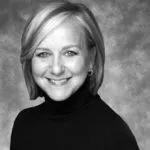 “WHAT WILL I NEED to practice? If I choose not to return to work, how do I figure out unemployment? And if I return, what about my own liability as a health-care provider?”
“WHAT WILL I NEED to practice? If I choose not to return to work, how do I figure out unemployment? And if I return, what about my own liability as a health-care provider?”
Those are the main questions dental hygienists have been asking themselves and groups like the American Dental Hygienists’ Association (ADHA) amid the pandemic. Along with others, Battrell, ADHA’s Cheif Executive Officer, has been working to provide answers.
The ADHA’s first response was to create a special Covid-19 information clearinghouse with a dedicated email address so that hygienists from all over, whether members or not, could get in touch. Battrell, a hygienist by background, and her staff could in turn direct the inquiries to those who might be able to help. “We’re in it,” she says, “to connect hygienists to the resources they need.”
The ADHA then rallied a cohort of experts in infection control, clinical practice, teledentistry and public health to pore over a variety of guidelines from the CDC, OSHA, ADA, OSAP and the rest of the administrative alphabet soup to create an informed task force with solid recommendations about going back on the job.
Within a week, the team had released Interim Guidance on Returning to Work online, which includes a checklist to help hygienists determine their readiness. “There is a plethora of considerations that hygienists need to think about when deciding if they feel secure,” Battrell says. “The most important step is to have a conversation with your employer to make a team-based decision on adapting the practice to meet CDC and OSHA guidelines.”
The situation continues to evolve. “We stand in support of the recommendations from the CDC, and right now the guidelines say [hygienists] should be seeing emergency patients only,” Battrell told Incisal Edge in May. “But we anticipate much more specific guidance. We’re in the thick of it and will continue to follow through on our mission”—that of being a keen advocate for a group within dentistry that has sometimes found itself without a powerful voice at the table. No more.
ONES TO WATCH
A TRIFECTA OF COMERS TO KEEP YOUR EYE ON IN 2020—AND TO LOOK FOR ON THIS LIST IN 2021.
CHRISTOPHER E. STEELE
PRESIDENT, PARK DENTAL
Dr. Steele, a general dentist in Minnetonka, Minnesota, was named president of Park Dental in July 2019. Formerly headed by Dr. John Gulon, an important figure who was a mainstay on this list, Park Dental is an Eden Prairie, Minnesota–based DSO with a twist: It’s an employee-owned group practice, akin to a law firm, in which each dentist has equity—and, vitally, is granted a say in how the operation is run. Dr. Gulon, who started with Park Dental in 1987, built the business into an increasingly attractive model for dentists; now it’s up to Dr. Steele to keep the momentum going.
JONATHAN KOCH
SENIOR VICE PRESIDENT AND CEO, GLOBAL DENTAL GROUP, HENRY SCHEIN
The continued Covid-19-spurred importance of legendary Henry Schein CEO Stanley Bergman (No. 4) hasn’t changed the fact that speculating about succession at the Long Island manufacturing-and-distribution giant is an enchanting parlor game of long standing for dental-industry watchers. Koch is only in his mid-forties but has some two decades of experience with laboratory and health-care management; will 2020
(or perhaps a calmer 2021) be the year he finally gets the nod?
KENNETH SEROTA & RON SASLOW
PRESIDENT OF DENTAL, CANTEL MEDICAL; CEO, HU-FRIEDY
In a surprise deal last July, Cantel Medical—a New Jersey–based equipment maker—bought Chicago dental-device manufacturer Hu-Friedy for $775 million in (mostly) cash and (some) stock. The deal closed in October, and the new unit was officially unveiled this March, about a week before the U.S. economy went into coronavirus hibernation. Can these two members of the Hu-Friedy old guard deliver on the deal’s putative synergistic promise, especially as dentistry struggles to get back on its feet? The company does have a significant product portfolio in the infection-control segment, sure to be increasingly important in a post-pandemic world.
22. THE BEAUTIFUL MIND
WARDAH INAM
CEO, OVERJET | CAMBRIDGE, MASSACHUSETTS (NEW)
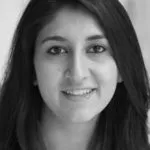 THE INTRODUCTION of artificial intelligence to dentistry (and countless other fields besides) means we’re witnessing a scientific and medical revolution in real time—and Boston-area startup Overjet, incubated at the Harvard Innovation Lab by Inam, its CEO—is among the leaders at the parapets.
THE INTRODUCTION of artificial intelligence to dentistry (and countless other fields besides) means we’re witnessing a scientific and medical revolution in real time—and Boston-area startup Overjet, incubated at the Harvard Innovation Lab by Inam, its CEO—is among the leaders at the parapets.
Everyone’s semiannual dental checkup produces hundreds, if not thousands, of quantitative and qualitative data points, but how that information is interpreted, stored and acted upon has always been a mishmash. “[Patient care] is suffering due to lack of standardization and data-driven decision making,” Inam, Overjet’s CEO, wrote in “Towards Data-Driven Dentistry and Standardized Care” on Medium.com last August. “It’s often said that going to 10 different dentists can result in 10 very different diagnoses.”
We’re striving to build a future of dental care in which dentists are empowered by technology and supported by payers to practice high-quality, patient-centric care.”
Computational dentistry and A.I., though, have the potential to change that dramatically. Overjet’s tech helps software read and interpret digital information—radiographs, photos, scans, biomarkers, medical history and so on—and uses algorithms and machine learning to devise diagnostic inference and proposals for better patient-specific treatments. “This approach encodes dentists’ understanding of disease identification and progression into precise, bias-free and repeatable frameworks to provide tools for better decision making,” Inam, 32, says. Investors agree: In early June, Overjet raised $7.85 million in a seed round led by Bay Area venture firm Crosslink Capital.
Her credentials are unassailable: She developed A.I.-powered autonomous systems while working on a Ph.D. in electrical engineering and computer science at MIT. She also worked as a postdoctoral fellow at the MIT Computer Science and Artificial Intelligence Lab, where she developed remote biomedical sensing technology. In short, she’s really smart—and Overjet’s work will only become more important as science and overall knowledge advance. “We’re striving to build a future of dental care in which dentists are empowered by technology and supported by payers to practice high-quality, patient-centric care,” she says. Hear, hear.
23. THE RIGHT-HAND MAN
GREG MINZENMAYER
CHIEF OPERATING OFFICER, GLIDEWELL LABORATORIES | NEWPORT BEACH, CALIFORNIA (NEW)
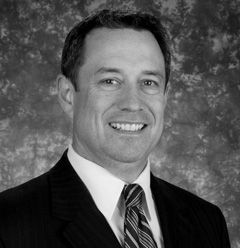 FOR FIVE DECADES, Glidewell Laboratories has been the leading provider of dental lab products and professional services. With
FOR FIVE DECADES, Glidewell Laboratories has been the leading provider of dental lab products and professional services. With
its founder, Jim Glidewell, at the helm, it has innovated in every aspect of dentistry—specializing in crowns and bridges, ceramics, implants, prosthetics and more, becoming the largest privately held dental laboratory on earth.
Glidewell, 75, is a titanic industry figure, and still the company’s CEO. But no triumph is ever fully secured alone, and COO Minzenmayer, Glidewell’s trusted aide-de-camp, has been second in command to the master for nearly 15 years. He joined the company in 2006 as director of implant business development, bringing more than a decade of industry experience with him. He became COO in 2010 and is responsible for Glidewell Labs’ daily operations and system improvements. His focus, Minzenmayer says, is on “efficiency and quality. We not only operate a large dental lab; we also manufacture zirconia, glass ceramics, composite resins, implants, mills, cutting tools, bench-top lab scanners, industrial-grade CT scanners and our own CAD/CAM software. This allows us to meet the changing demands of a dynamic market.”
Minzenmayer managed the 2010 launch of Glidewell’s popular BruxZir solid zirconia crowns and recently unveiled the Zeramex XT, a two-piece metal-free ceramic implant that provides highly lifelike esthetics for anterior and thin tissues. He notes that Glidewell had planned to launch a digital, fully automated BruxZir crown-milling center by mid-2020—an innovation that would use artificial intelligence to reduce errors. Like so much else, that timetable is now very much in corona-flux. Still, Minzenmayer is bullish on Glidewell’s future. “Thanks to a visionary CEO, an incredibly talented group of CDTs, engineers, research scientists, software developers, dentists and manufacturers,” he exults, “I have the most fun job in dentistry.”
24. THE SOCIAL CONNECTOR
PAUL GOODMAN
FOUNDER, DENTAL NACHOS | PHILADELPHIA, PENNSYLVANIA (LAST YEAR: 25)
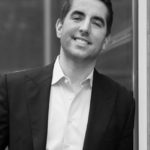 IT’S FITTING THAT a man who goes by “Dr. Nacho” would be a success at garnering and building an online and social-media community of dentists and industry professionals. (When we included Dr. Goodman on this list last year, there were 14,000 people in his members-only Facebook group; today there are more than 24,000.)
IT’S FITTING THAT a man who goes by “Dr. Nacho” would be a success at garnering and building an online and social-media community of dentists and industry professionals. (When we included Dr. Goodman on this list last year, there were 14,000 people in his members-only Facebook group; today there are more than 24,000.)
The charismatic doctor got his DMD from the University of Pennsylvania and now owns two practices in Mercer County, New Jersey, near Trenton. In 2017, after more than a decade in practice, he started Dental Nachos on the incontrovertible notion that “nachos are made to be shared, and so are good ideas.”
“Dentistry by nature is isolating, and dentists can easily become lonely and feel they’re very much on their own,” Dr. Goodman says. “My initial goal in creating Dental Nachos was simply to bring dentists together in an online community where they could elevate each other and share good ideas.”
Benco Dental (the publisher of Incisal Edge) partnered with Dr. Goodman earlier this year on a variety of continuing-education initiatives. In addition to that Dental Nachos Facebook group—which averages hundreds of posts a day from dentists around the world—there’s also a Dental Nachos Encyclopedia (65 hours of audio and visual CE content) and a three-tiered “Dental Nachos Supreme” (yum!) membership model that offers bonus content and coaching. Says Dr. Goodman: “We produce content that you can implement in your office immediately and that will allow you to skip all the trial and error that dentists typically [endure].”
One big benefit of such a focused community is the ability to respond to important news and events in real time. As the pandemic began to build, Dr. Goodman started hosting daily Dental Nachos Covid-19 Q&A sessions, during which he shared key resources related to personal protective equipment, teledentistry and OSHA and HIPAA regulations. “I also provided free daily CE courses during that time to help dentists leave quarantine with the ability to make more money than they could before social distancing,” he says. He’s mitigating risk, in other words—financial and otherwise—and enhancing dentists’ careers through the power of shared knowledge. All that, and a plate of chips.
My initial goal in creating Dental Nachos was simply to bring dentists together in an online community where they could elevate each other and share good ideas.”
WHERE ARE THEY?
SEVERAL MAJOR PLAYERS ON OUR LIST THE LAST FEW YEARS HAVE SHUFFLED OFF THE STAGE FOR ONE REASON OR ANOTHER. WHERE’D THEY GO?
MARTHA SOMERMAN
FORMER DIRECTOR, NATIONAL INSTITUTE OF DENTAL AND CRANIOFACIAL RESEARCH
The colossal Dr. Somerman, a fixture not only on this list but within its top tier, retired as director of the NIDCR at the end of 2019. The first female director of the NIDCR, Somerman was universally hailed for the quality of its research toward the improvement of dental, oral and craniofacial health, and for “NIDCR 2030,” an initiative that seeks to inculcate whole-body health as part of the organization’s mission.
ALEX FENKELL & JORDAN KATZMANN
COFOUNDERS, SMILEDIRECTCLUB
No. 11 on this list in 2019, Fenkell and Katzmann had a great early run with SmileDirectClub, which enjoyed a successful September 2019 IPO that (briefly) made the two young executives billionaires. Its stock began to tumble shortly thereafter, ravaged by short sellers and state regulators, furious opposition from dentists and class-action lawsuits from angry customers. Disrupt they have; can they align their business model anew?
25. THE NEW KING OF STRAUMANN
GUILLAUME DANIELLOT
CEO, STRAUMANN BASEL | SWITZERLAND (LAST YEAR: ONE TO WATCH)
THE ANNOUNCEMENT THAT industry fixture Marco Gadola, Strau-mann’s former CEO, would be retiring led to a nearly two-year search for his replacement—a journey that led the Swiss dental manufacturer right back home to the 49-year-old Daniellot, who took over the top job in January. (Gadola stepped down from running the company but has retained his seat on its board.)
A 13-year veteran of Straumann, Daniellot led sales for its North American operations, CAD/CAM prosthetics, biomaterials and digital restorative equipment. Solid training, but he’s got enormous Swiss clogs to fill: During Gadola’s seven-year tenure as CEO, Straumann doubled its annual revenue, profits and workforce; its market capitalization increased more than fivefold. The board feels it found the right man: “We’re delighted we can fill this position internally with an exceptional individual,” Gilbert Achermann, Straumann’s board chair, told the press upon Daniellot’s ascension.
He’ll have to draw on every last ounce of that exceptionalism in what will certainly be herky-jerky months ahead, as he strives to keep Straumann’s business excelling at Gadola-like levels in the wake of the coronavirus. Should there be the much-desired V-shaped recovery—or even one more resembling a U—Straumann will be well-placed to take advantage. The stakes, and the challenge for Daniellot as he assumes the mantle of one of the most successful dental executives of the last couple of decades, couldn’t be higher.
26. THE TOP DOC
JEROME ADAMS
20TH SURGEON GENERAL OF THE UNITED STATES | WASHINGTON, D.C. (NEW)
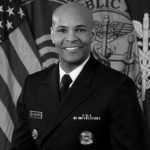 THE FEDERAL RESPONSE to the Covid-19 pandemic is understandably top of mind right now, and Dr. Adams has found himself at the center of some controversy regarding infection rates among African-Americans. Prior to the middle of March, though, the leading item on the doctor’s calendar was The 2020 Surgeon General’s Report on Oral Health, produced in tandem with the National Institutes of Health’s Institute of Dental and Craniofacial Research—the first such report since 2000.
THE FEDERAL RESPONSE to the Covid-19 pandemic is understandably top of mind right now, and Dr. Adams has found himself at the center of some controversy regarding infection rates among African-Americans. Prior to the middle of March, though, the leading item on the doctor’s calendar was The 2020 Surgeon General’s Report on Oral Health, produced in tandem with the National Institutes of Health’s Institute of Dental and Craniofacial Research—the first such report since 2000.
It’s important to the U.S.’s top physician. “Improving oral health is a personal passion of mine, ever since I worked as an anesthesiologist in a county hospital and saw the effects of severe oral disease,” Dr. Adams—the former Indiana State Health Commissioner, he was appointed by President Trump in September 2017—says on the NIH’s website.
There are five key aspects of Dr. Adams’s companion “Call to Action”: changing the perception of oral health and improving health literacy; replicating effective programs and expanding Medicaid; broadening research with the goal of transforming Americans’ knowledge of prevention, diagnosis and treatment of oral disease; increasing the diversity and capacity of the oral-health workforce; and boosting collaborations.
He’s also keen on eliminating oral-health disparities in an aging America, digitizing health-care communications of all kinds, curbing health-care expenditures and combating the opioid scourge—an epidemic with a dental connection that’s currently being vastly overshadowed by the coronavirus.
The topics in the report run the gamut from the effect of oral health on community well-being and even military readiness to substance abuse, high-risk behaviors, emerging technologies and promising research. “I view this effort as one of the most important during my tenure as Surgeon General,” Dr. Adams says—yet that effort, like everything else, has been subsumed by the Covid-19 tsunami. The country can’t focus on its oral health until it makes it through the pandemic. Dr. Adams likely finds himself a hostage to events these days in ways he never could have imagined.
27. THE LAB ASSISTANT
ANTON WOOLF
CEO, ARGEN | SAN DIEGO, CALIFORNIA (LAST YEAR: 19)
WOOLF IS THE best partner a twenty-first-century dental laboratory could possibly ask for. Independent labs across the United States have seen their operating and compliance costs soar over the last two decades, which has caused significant industry consolidation. Woolf’s Argen has a simple mission: to make these dental laboratories more successful.
To that end, Argen helps its clients cut costs and turnaround time by manufacturing many of their products for them, including Argen’s own branded clear aligners. Founded in South Africa in 1963 and known for being the world’s largest maker of precious-metal dental alloys, Argen has worked to diversify in recent years, moving into an 80,000-square-foot digital-manufacturing center with new machines and advanced automation, and investing in its online platform. This enables it to begin working on a new order within three minutes of a customer submitting it online, Woolf says.
Woolf seems to have put Argen in a good place to play this unwelcome hand about as well as could be hoped.
Argen began making clear aligners for labs in late 2018; pre-coronavirus, Woolf noted that distributing the aligners at “a competitive price [with] unprecedented turnaround times will be a key focus” in 2020. He continues to invest in Argen’s core business of gold alloy and zirconia. With metal prices soaring and zirconia’s dental significance only growing, Argen broadened its focus to become one of the U.S.’s largest dental-zirconia disc manufacturers. Late last year it launched ArgenZ ST Multilayer, a new zirconia product, and this autumn still hopes to debut ArgenZ HT Multilayer to complement the best-selling HT+ line.
“I believe the future of the dental-lab-oratory industry is bright,” Woolf says. It certainly is for Argen. The company is privately held, but Woolf notes that in 2019 its primary product lines “all had significant upward movement”: Zirconia-disc sales grew by 50 percent, equipment sales by some 46 percent and milled custom abutments by 12.5 percent. The second half of 2020 is as wild a wild card as has ever been drawn, of course—but Woolf seems to have put Argen in a good place to play this unwelcome hand about as well as could be hoped.
28. THE MARKET MAN
JEFF JOHNSON
SENIOR RESEARCH ANALYST, MEDICAL TECHNOLOGY, ROBERT W. BAIRD & COMPANY | MILWAUKEE, WISCONSIN (LAST YEAR: 22)
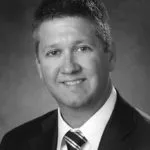 MANY SUCCESSFUL people pursue an unorthodox career path before they end up where, perhaps, they belonged from the get-go. That’s likely the case with Johnson, an affable, self-effacing man who has quietly become the most plugged-in, insightful analyst covering the dental industry.
MANY SUCCESSFUL people pursue an unorthodox career path before they end up where, perhaps, they belonged from the get-go. That’s likely the case with Johnson, an affable, self-effacing man who has quietly become the most plugged-in, insightful analyst covering the dental industry.
His good eye for company data might stem from the fact that he used to be an instructor of ophthalmology at Harvard Medical School. Aware that he possessed a keen sense for equity analysis, he went on to earn an MBA from Northwestern and in 2003 landed a job at Baird, a leading investment bank and financial-services firm. He has been deeply enmeshed in health care, dentistry and related industries ever since.
“Having covered the medical-device industry for nearly 20 years, I’ve built relationships with many different management teams, practitioners and other industry people,” Johnson says.
“Dental has been a standout during that time, though, as there’s so much camaraderie and collegiality, and I’ve been amazed at how many good people come into dental and never leave.”
The presence of so many good people—you likely know a few—helps explain why Johnson finds it especially important to get a sense of how dentistry is being affected by, and responding to, the problems caused by the coronavirus. “Those relationships are one of the key reasons we’ve been doing dental surveys every week since the Covid-19 pandemic broke out,” he says. “While we knew investors would appreciate our weekly updates, we also felt like these surveys could be our small way of providing a service to the industry that’s been so good to us over the years.”
With that in mind, then, Incisal Edge tapped Johnson to share his thoughts about the state of the industry’s most prominent and important public companies. You can read his insightful analysis, “Brighter Days Ahead?”, immediately after the 32 Most Influential.
There’s so much camaraderie and collegiality in dentistry. I’ve been amazed at how many good people come into dental and never leave.”
29. THE WILD WEST’S NEW SHERIFF
MARK ADAMS
DENTAL BUSINESS LEADER, AMAZON| SEATTLE, WASHINGTON (NEW)
 ADAMS LEADS THE professional business-to-business (B2B) dental commercial operations at Amazon Business, a new marketplace from the Jeff Bezos behemoth that sells directly to companies and offers benefits such as special pricing, tax exemptions, business-only products and more.
ADAMS LEADS THE professional business-to-business (B2B) dental commercial operations at Amazon Business, a new marketplace from the Jeff Bezos behemoth that sells directly to companies and offers benefits such as special pricing, tax exemptions, business-only products and more.
Aside from the obvious—selling over-the-counter products to consumers and devices to health-care professionals—Adams is likewise responsible for developing and driving Amazon’s growth strategy for its dentist consumers, which includes product-line management, pricing and marketing tactics.
The dental vertical sells . . . well, you name it: bonding agents, restoratives, impression materials, burs and much more across hundreds of brands. Yet in recent months, allegations in the Wall Street Journal and New York Times have detailed the difficulty Amazon has had policing “gray market” and outright counterfeit products. (“An awful lot” of third-party sellers “are peddling fakes,” noted the Times’ consumer-product guide, the Wirecutter, in February.) Can the dental segment really be taking off?
Pre-coronavirus precedent would seem to say yes. In 2018, some 34 percent of doctors used Amazon to purchase medical and dental supplies, according to CNBC, and Amazon Business is licensed to sell Class I and II medical and dental products in 47 states to those who have added their medical licenses to their Amazon Business accounts, indicating that there’s a market for more efficient delivery of such items.
Amazon is also working on safeguards to snuff out counterfeits, spending more than $400 million in 2018 alone on personnel and technology dedicated to the machine learning and data science it’s using to help solve the problem of unscrupulous sellers. Congress has taken note, requesting on May 1 that Bezos testify regarding the company’s use of third-party information to create private-label products. (Amazon has been noncommittal in response.) It’s a bit of a mess—one that, if it can be sorted out, would leave Adams free to help his dental-industry customers procure what they need most efficiently.
30. THE LASER TRAILBLAZER
MIKE CATALDO
CEO, CONVERGENT DENTAL | NEEDHAM, MASSACHUSETTS (NEW)
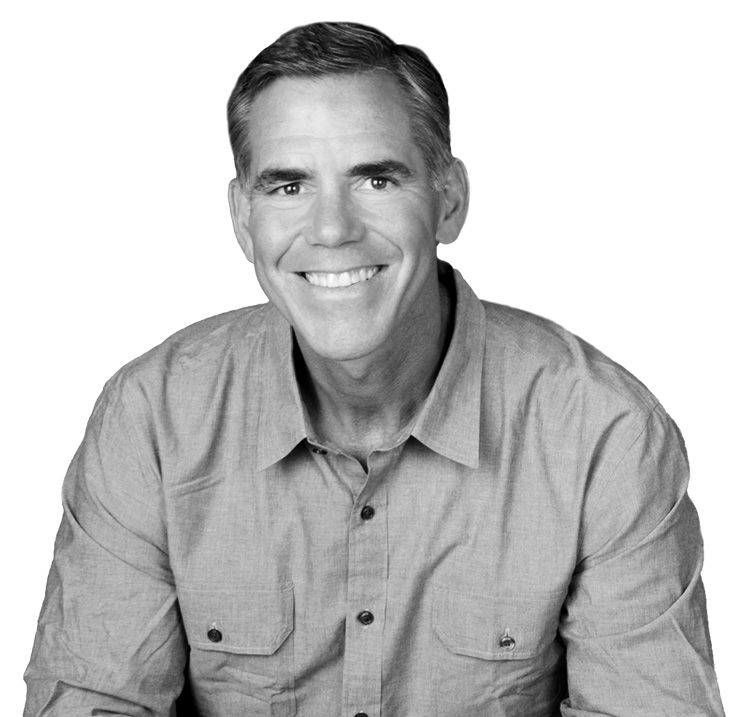 THE LASER REVOLUTION has upended dentistry (in a good way) in recent years, and Convergent Dental, based near Boston, is one of the companies at the forefront. That’s due in large part to the path-breaking Solea, the world’s first computer-aided CO2 laser system cleared by the FDA for all body tissue.
THE LASER REVOLUTION has upended dentistry (in a good way) in recent years, and Convergent Dental, based near Boston, is one of the companies at the forefront. That’s due in large part to the path-breaking Solea, the world’s first computer-aided CO2 laser system cleared by the FDA for all body tissue.
Convergent introduced Solea in 2013 to huzzahs: Between its debut and 2016, its revenue growth totaled more than 2,000 percent, and in 2018 it was ranked by Deloitte as the second-fastest-growing medical-device company in North America.
Cataldo, a seasoned entrepreneur, called Solea “an entirely new paradigm in laser dentistry” whose success rests on the hard- and soft-tissue work it enables, leading to minimal patient pain despite the fact that it’s anesthetic-free. It works on gingiva, dentin, enamel and bone. “Our customers are doing all sorts of procedures—cavity preps on virgin teeth, taking out old amalgams and composites,” Cataldo says. “[They also] do a wide range of soft-tissue work, including fibroma removals, crown lengthening and more.”
Convergent stands to benefit greatly from dentists’ increasingly consuming concern about aerosol and droplet discharge during even the most routine chairside procedures. Noting that the ADA has recommended that dentists employ clinical techniques that reduce spatter as much as possible, the company conducted a study that found that Solea produced between 97 and 99.9 percent fewer aerosols than a traditional drill—all the more reason for nervous doctors to give it a try.
Convergent recently announced a new sleep application for Solea that provides better-than-CPAP relief for snorers by tightening the soft-palate tissue in a five-minute treatment that reduces the vibrations that cause snoring and poor sleep. Such breadth of application helps explain why this revolutionary product, although it’s perhaps starting to get a bit long in the tooth, remains no less influential than ever.
31. THE TEACHER
SCOTT LEUNE
FOUNDER, BREAKAWAY PRACTICE | SAN ANTONIO, TEXAS (NEW)
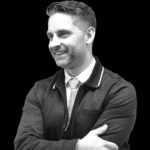 DEMAND IS RIFE among dentists for business training, particularly among new practitioners who might not have gotten anything resembling a “dental MBA” when they were in school.
DEMAND IS RIFE among dentists for business training, particularly among new practitioners who might not have gotten anything resembling a “dental MBA” when they were in school.
Enter the Breakaway Practice, started by Dr. Scott Leune in 2006. The San Antonio–based management consultancy helps dentists elevate what they thought was their professional ceiling through a variety of business-improvement programs. Its flagship course, the Business Masters Seminar, establishes Breakaway’s core organizational principles and teaches an array of innovative management tactics.
There’s the Advanced Startup Seminar, a two-day course covering cost reduction and smart practice design. And Office Manager Mastery, which primes new-to-the-industry administrators in dental-management best practices. Plus Dentists’ Boot Camp, which exposes novices to what the company calls a “fire hose of information.” (Insert Full Metal Jacket jokes here.)
That seminar menu might sound recondite, but the skills on offer are anything but: expediting X-ray scheduling, managing administrative tasks such as HR and payroll, negotiating the purchase price of one’s first practice, being cost-efficient with equipment and supplies and much more. The idea is to help dentists build a state-of-the-art practice for a fraction of the usual cost. (Dr. Leune is also an “Education Leader” at Dental Whale, Joe Cavaretta’s lauded practice-management company.)
Dr. Leune, 41, graduated from the University of Texas Health San Antonio School of Dentistry in 2005 and went on to buy and build three startup practices to a total staff of 80 with more than 700 patients a month. He also currently oversees seven practices in the Dallas–Fort Worth area. Through Breakaway, he’s helping many others like him do exactly what he’s doing—a solid legacy for sure.
32. THE CONSOLIDATOR
DAVE SPROAT
CEO, YOUNG INNOVATIONS | ALGONQUIN, ILLINOIS (NEW)
YOUNG INNOVATIONS, the global manufacturer and distributor of consumable dental supplies, was on the receiving end of substantial investments over the last seven years from private equity firms Linden Capital Partners and the Jordan Company, which primarily focus on midmarket health-care companies. Ever since, Young, led by CEO Sproat, has been on an acquisi-tion boom, completing seven in the last three years, greatly expanding its already diverse portfolio of dental products. It also created a business called Bridge2 to help original equipment manufacturers better leverage their own R&D departments from start to finish through the product-development cycle.
Sproat—a Northwestern MBA and the former president of Patterson Medical and VP of sales at Patterson Dental—has led his troops to sales increases since the Linden investment reverted the company to privately held in 2013, with a sales boost from $109 million to $162 million over that period, which saw more than two dozen branded product launches.
“We want to be the go-to partner for preventative oral health care and restorative dental products,” Sproat said at the time Bridge2 debuted. “Our reputation for quality, the experience of our people and our full-service capabilities have enabled us to create a process that improves product development and provides better value for our partners.”
The acquisitions he has spearheaded, meanwhile, span brands in the preventive, restorative, orthodontic, endodontic and diagnostic spaces, including (among many others) pickups of bulk-supply outfit Plak Smacker; prophy-product company Denticator; Biotrol, an infection-control specialist; and, this past November, PuraGraft, a supplier of biomaterials for bone and tissue regeneration.
HONORABLE MENTION
THE HUMAN MOUTH CAN HOLD ONLY SO MANY TEETH, AND THIS ANNUAL LIST CAN CONTAIN ONLY SO MUCH INFLUENCE. HERE ARE A HALF-DOZEN ADDITIONAL FIGURES OF SIGNIFICANCE WHO ARE ALREADY PLAYING MAJOR ROLES IN DAY-TO-DAY DENTISTRY.
JIM HARDING
CEO, HENRY SCHEIN ONE
When Henry Schein (see Stanley Bergman, No. 4)spun off a new dental-software unit, Harding was tapped to lead the new company. He’s been with Schein since 2000 and was most recently its chief technology officer. The privately held Henry Schein One inherited more than 40 software brands from its parent and works to integrate medical-tech solutions for its dentist partners around the globe.
LAURA KELLY
CEO, MICRODENTAL LABORATORIES AND MODERN DENTAL USA
This veteran cosmetic clinician began her career in 1985 as an entry-level technician at MicroDental, and this January she returned home, taking over as CEO of MicroDental Laboratories and its subsidiary Modern Dental Laboratory USA, overseeing the American and Canadian operations of a company renowned for its exquisitely crafted restorations.
DIEGO GABATHULER
CEO, IVOCLAR VIVADENT
The Swiss native (now based in Liechtenstein) took over this lauded company, the largest family-owned concern in dentistry, last July from 13-year CEO Robert Ganley. He began his Ivoclar career in the early 2000s as a product manager, with a later stop in Silicon Valley as well.
JAY GEIER
CEO, THE SCHEDULING INSTITUTE
Frustrated when he noticed how few phone calls from potential patients were converting into actual appointments, Geier devised a technique that increases a practice’s patient rolls significantly. He has advised some 2,300 dental practices worldwide.
STEVE BISHOP
CEO, PROCTER & GAMBLE HEALTH CARE
A P&G lifer who has been with the conglomerate for 35 years, Bishop now finds himself leading its embrace of oral-health-boosting data from smart connected devices such as the Oral-B IO, a new smart toothbrush still scheduled to debut later this year.
JUSTIN JOFFE & HITESH TOLANI
CEO, HENRY THE DENTIST; FOUNDER AND CEO, VIRTUDENT
Roughly 56 million Americans live in places without adequate dental care close by. Joffe and Tolani are working on the “Uber-iz-iation” of the profession, bringing high-quality dental care directly to people’s homes and workplaces.




